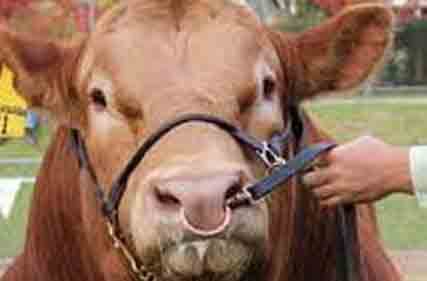 When was the last time you considered not which bull you buy, but where you buy it from and why?
When was the last time you considered not which bull you buy, but where you buy it from and why?
Where is your herd at today compared to where you want it to be in 5-10 years time? Most importantly, what and where will your market be in 5-10 years time? As you begin to reflect on the year and consider these questions, it’s time to think about the bulls or cows that you will be buying this season or next.
Take the time now to sit down and discuss these matters with your team. Build a plan that will make every bull purchase count to take your cattle and your business to where you want it to be.
2. Select a seedstock producer
Now that you’ve fine-tuned your genetic plan, the next step is to find a seedstock producer with bulls that fit your requirements. Be curious and keep an open mind to see what options are out there.
3. Selecting the right bull
After establishing your breeding objectives and finding a bull breeder that matches these, it’s time to look closely at what bulls they have on offer.
Before the sale
It’s time to kick your analytical brain into gear. Closely review the sale catalog or ask the breeder for an excel spreadsheet of the sale team- whatever method is easier for you to sort through the bulls. Go through the sale team and highlight any bulls that are within the thresholds of each trait you selected in your genetic plan. You will find that a few bulls tick multiple boxes. These are in your YES category. Next, go through and cross out any that are way outside of your thresholds. These are in your NO category and, no matter how good looking the bull is, you are not allowed to buy it. There will be a few that tick one or two boxes, which if assessed alongside its other data, can also go in your YES category.
By now you should have a handful of bulls that really stand out on paper- fingers crossed they sparkle on the day too. Doing these steps will really simplify the bull buying process and help you to stay focused to achieve your breeding objectives.
What to look for on the day
Now is your time to pick the best option for you while weighing everything up. With all of the numbers work done, now is the time to visually assess the bulls on offer.
Really take the time to stand back and look at every part of the bulls you’re interested in. Remember to not bother with those in the NO category. Some bulls may immediately not meet your visual criteria.
When selecting Limousin bulls, it is important to avoid the distraction of any non-genetic influences on the appearance or performance of the bulls that are available. While visually assessing the bulls, consider non-genetic influences such as age, supplementary feeding status, whether the bull was reared by a mature cow or a heifer etc.
Other selection criteria that you may also consider during your assessment on the day might include: temperament on sale day; coat and hide characteristics; genetic diversity of the bulls pedigree compared to the females to which they will be joined; muscularity; maturity; or various assessments of animal type. It is important to balance selection of any traits of specific importance based on their influence on the profitability of a beef enterprise, so try and avoid the distractions of any aesthetic features that don’t have an impact on your bottom line.
If a bull meets the bill on paper, is structurally perfect and easy on the eye, you may have found a winner!
The next step is to make sure your bidding elbow is well greased because after all of this work- you don’t want to miss out on that game-changing bull you’ve found.
By following all of these steps, you will ensure that your selection decisions are focused on identifying bulls that are carrying the genetic package most aligned with your breeding objectives.
Georgia Pugh, neXtgen Agri
Courtesy Limousin Australia
